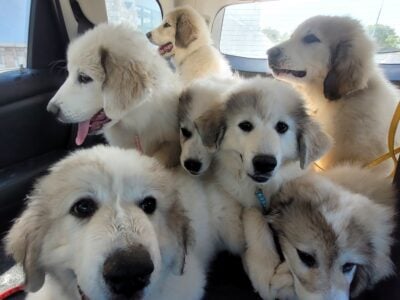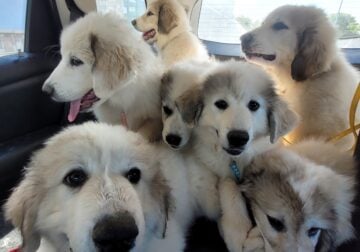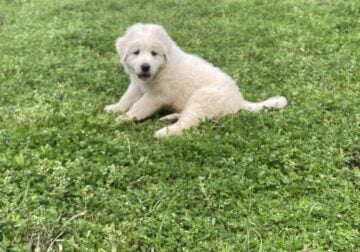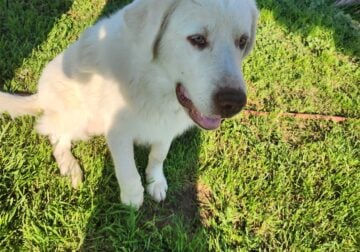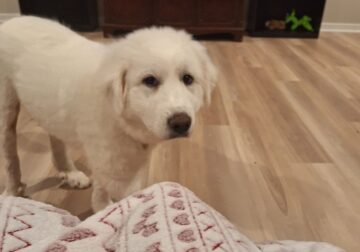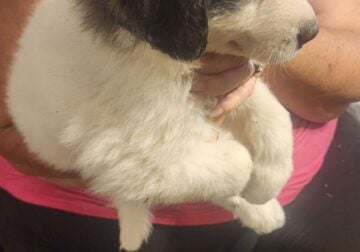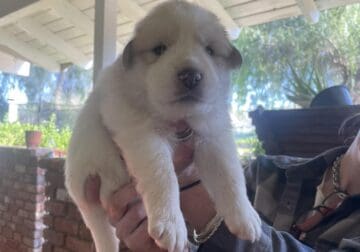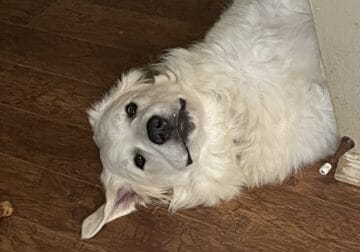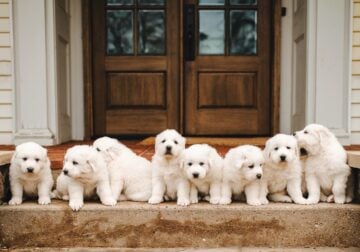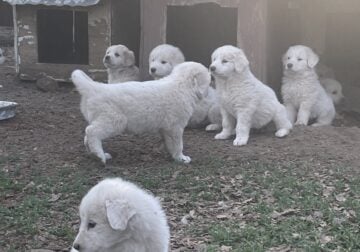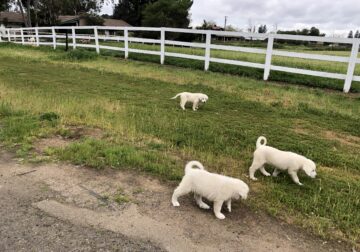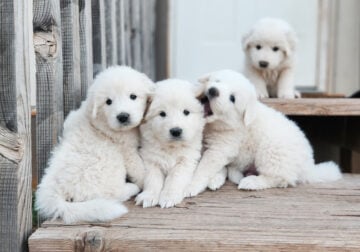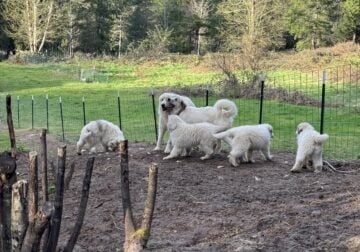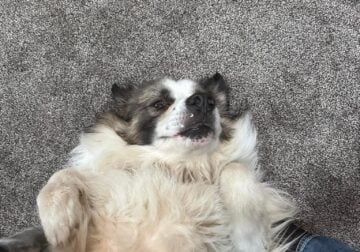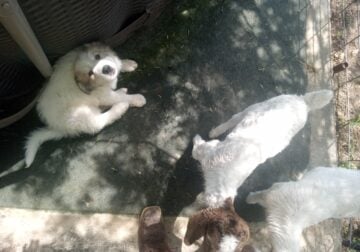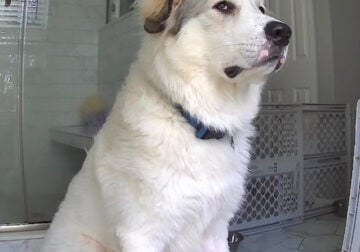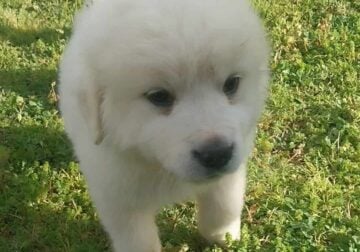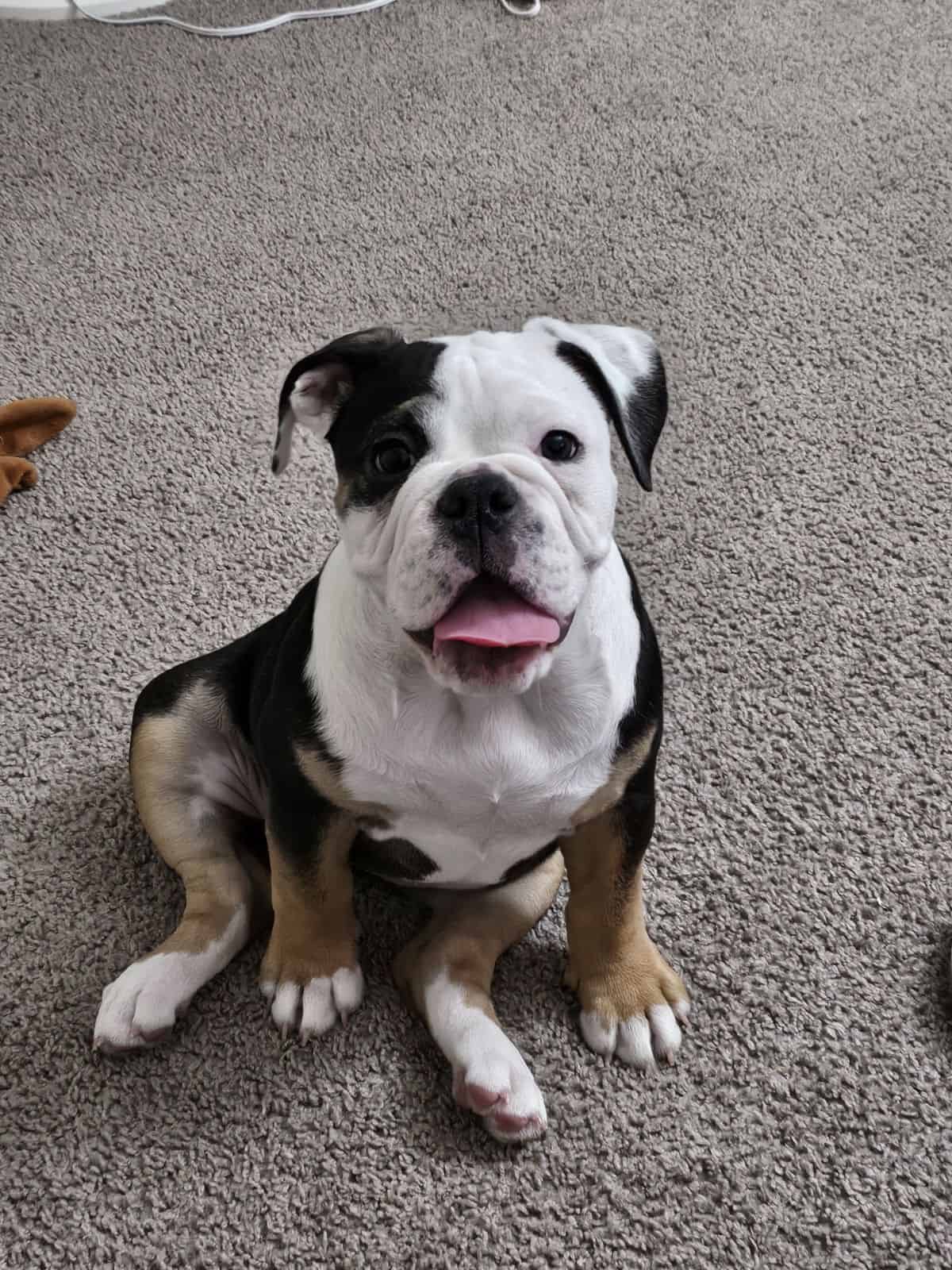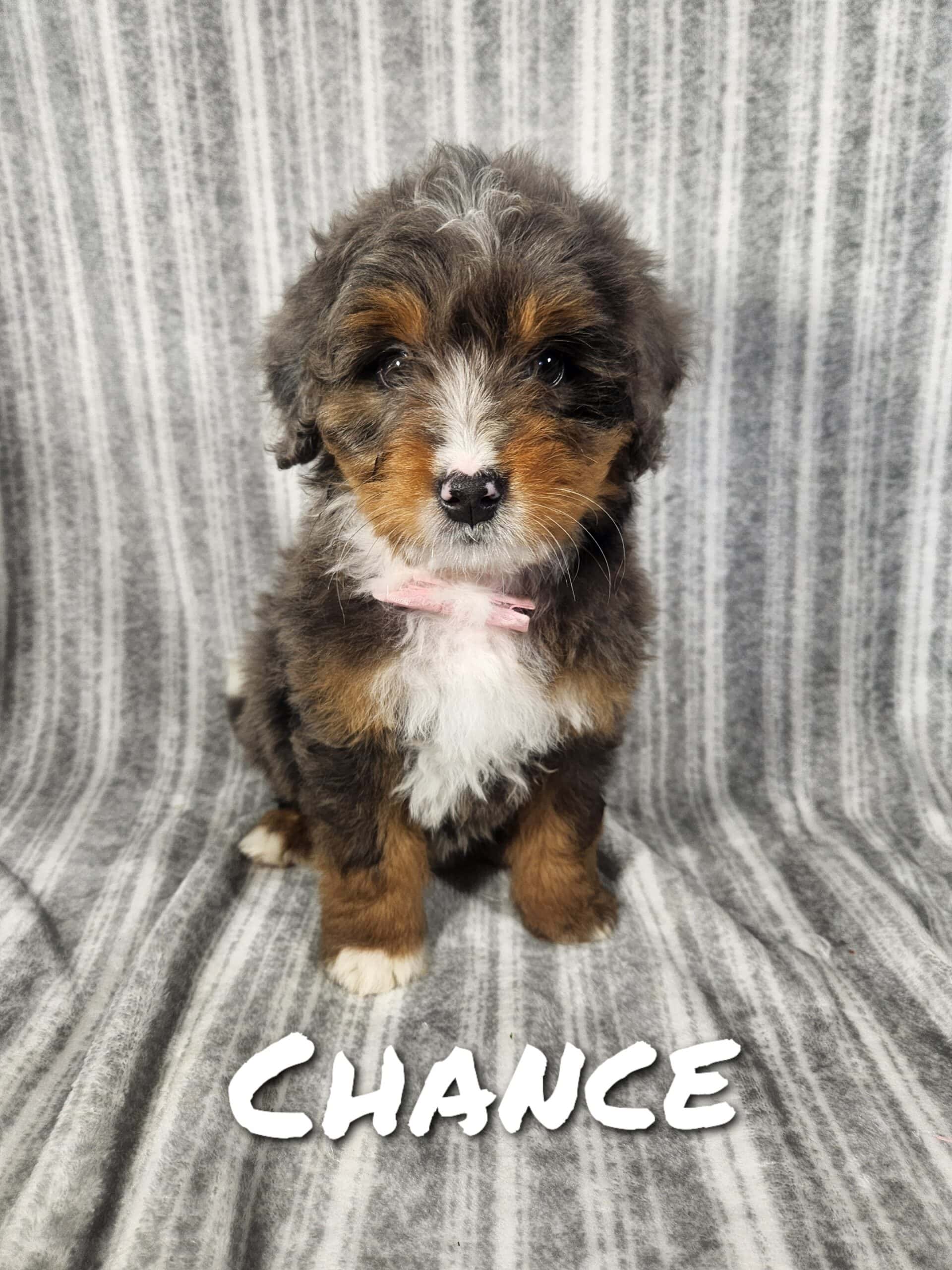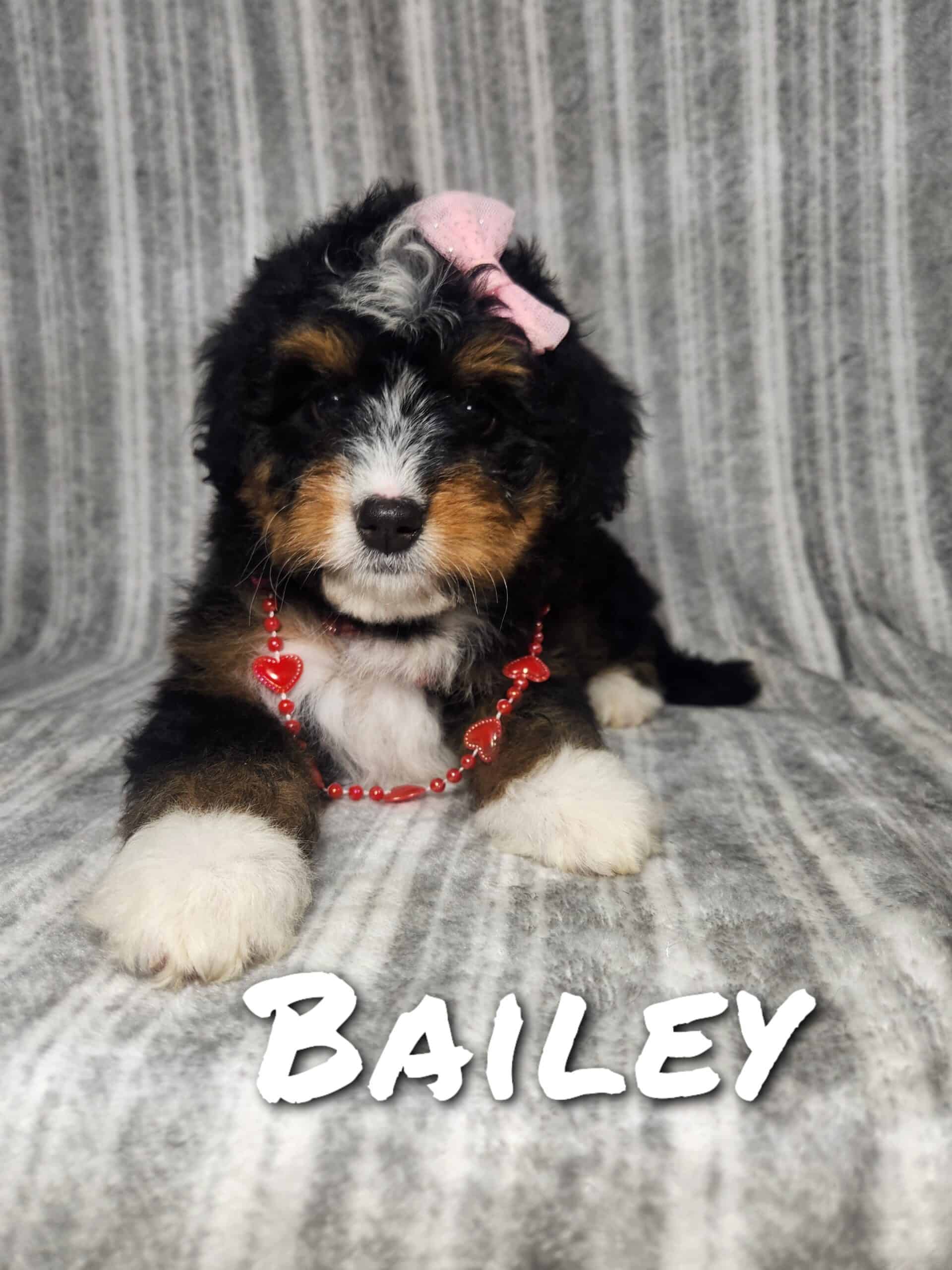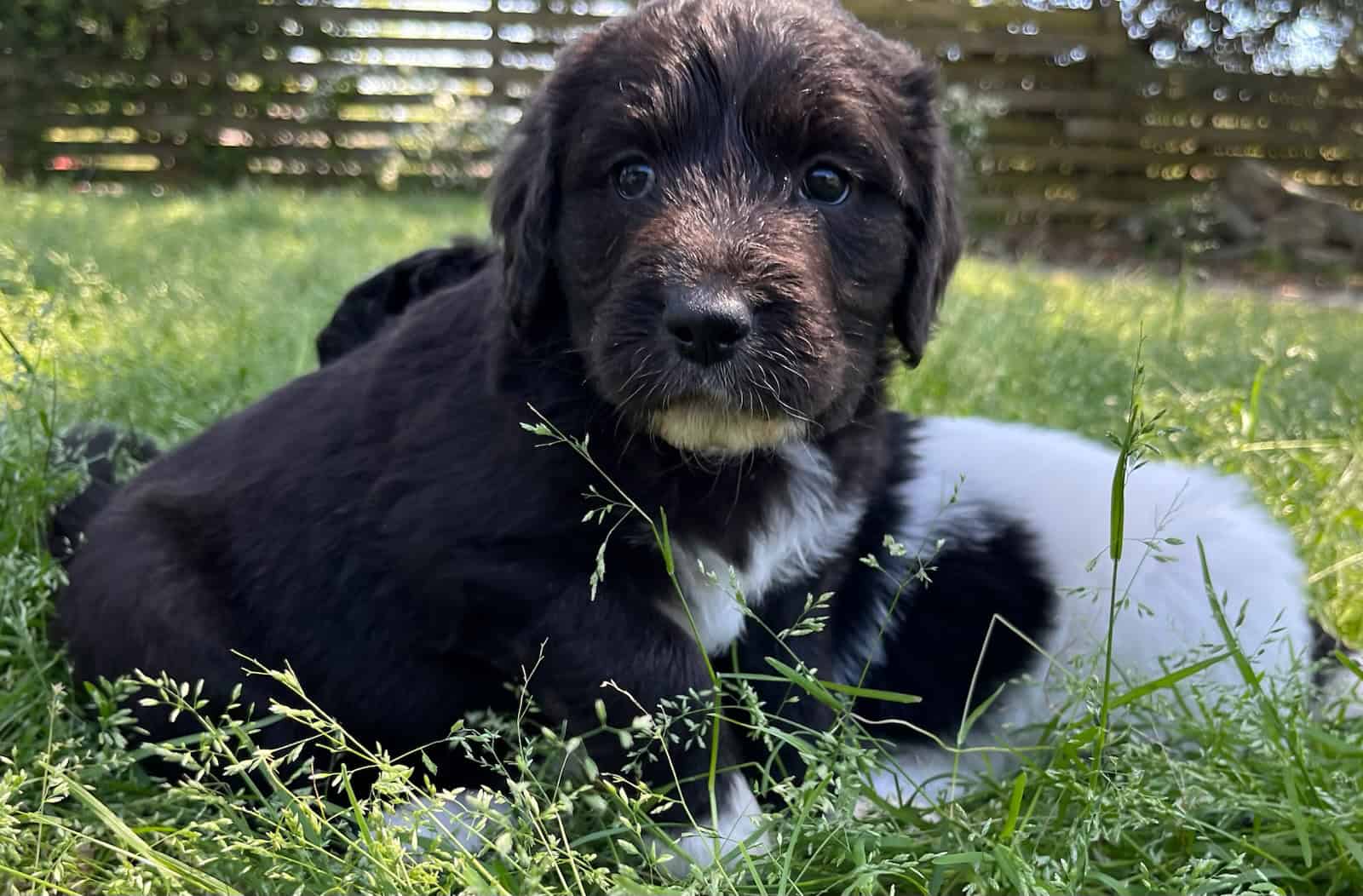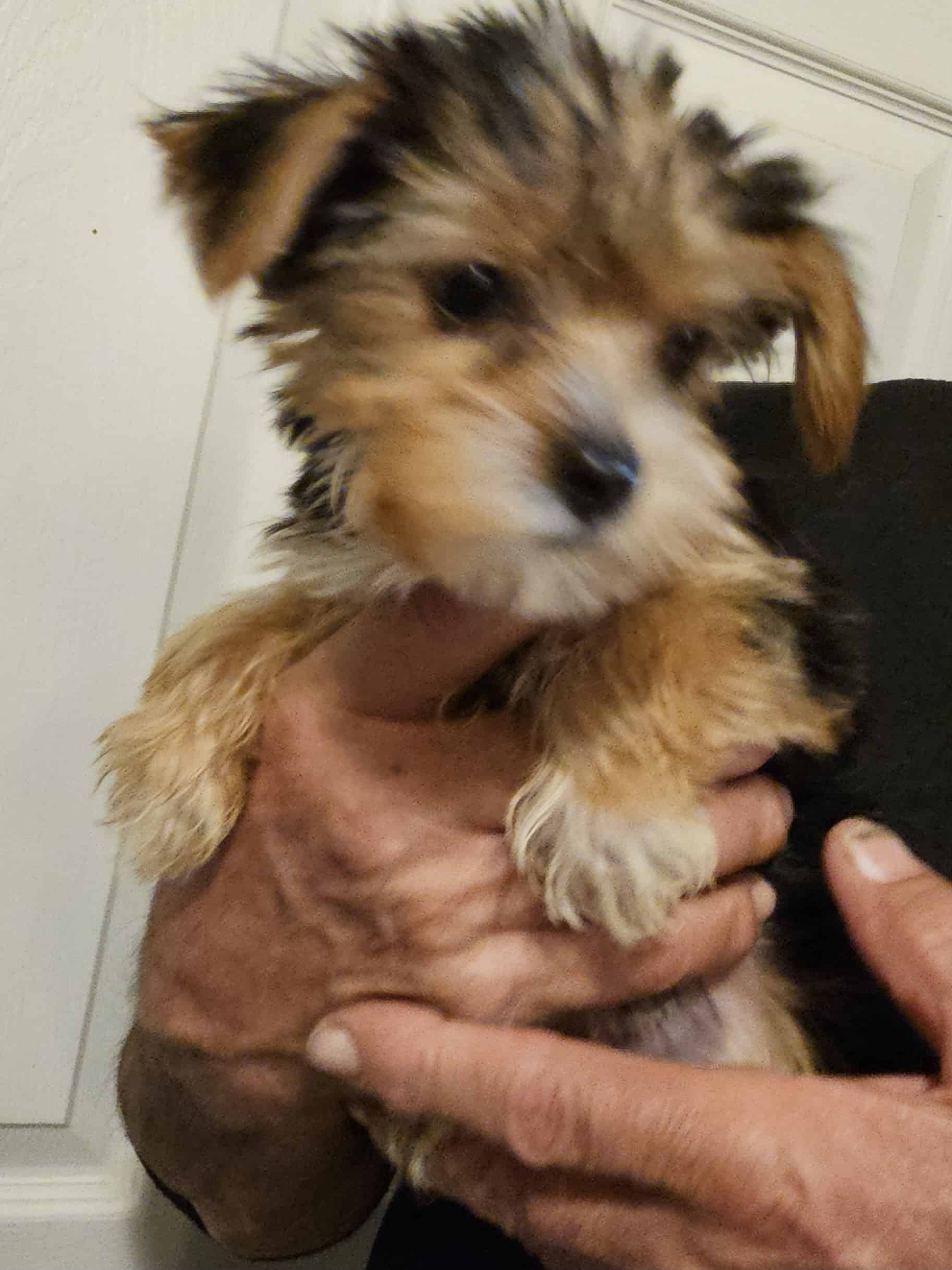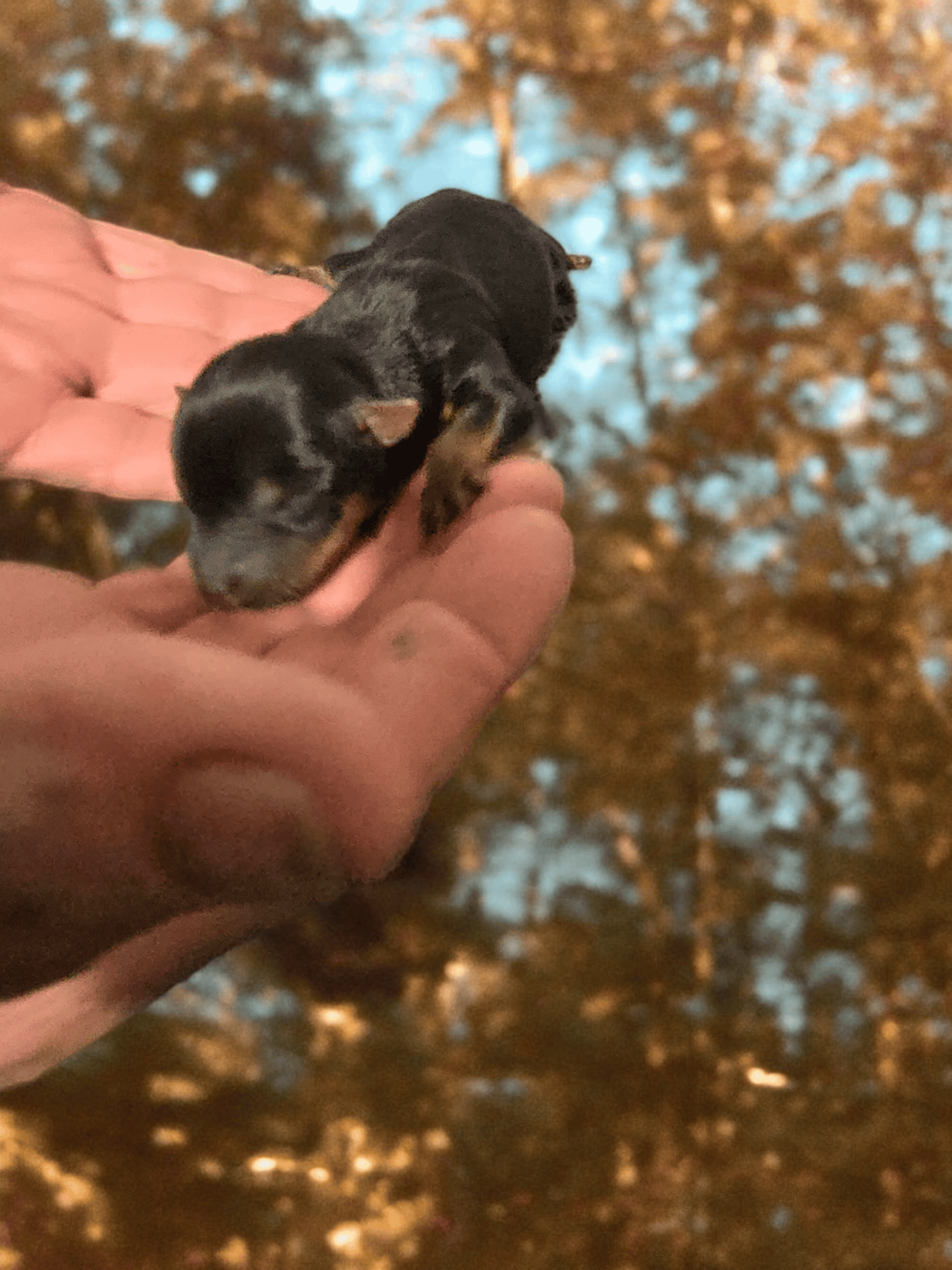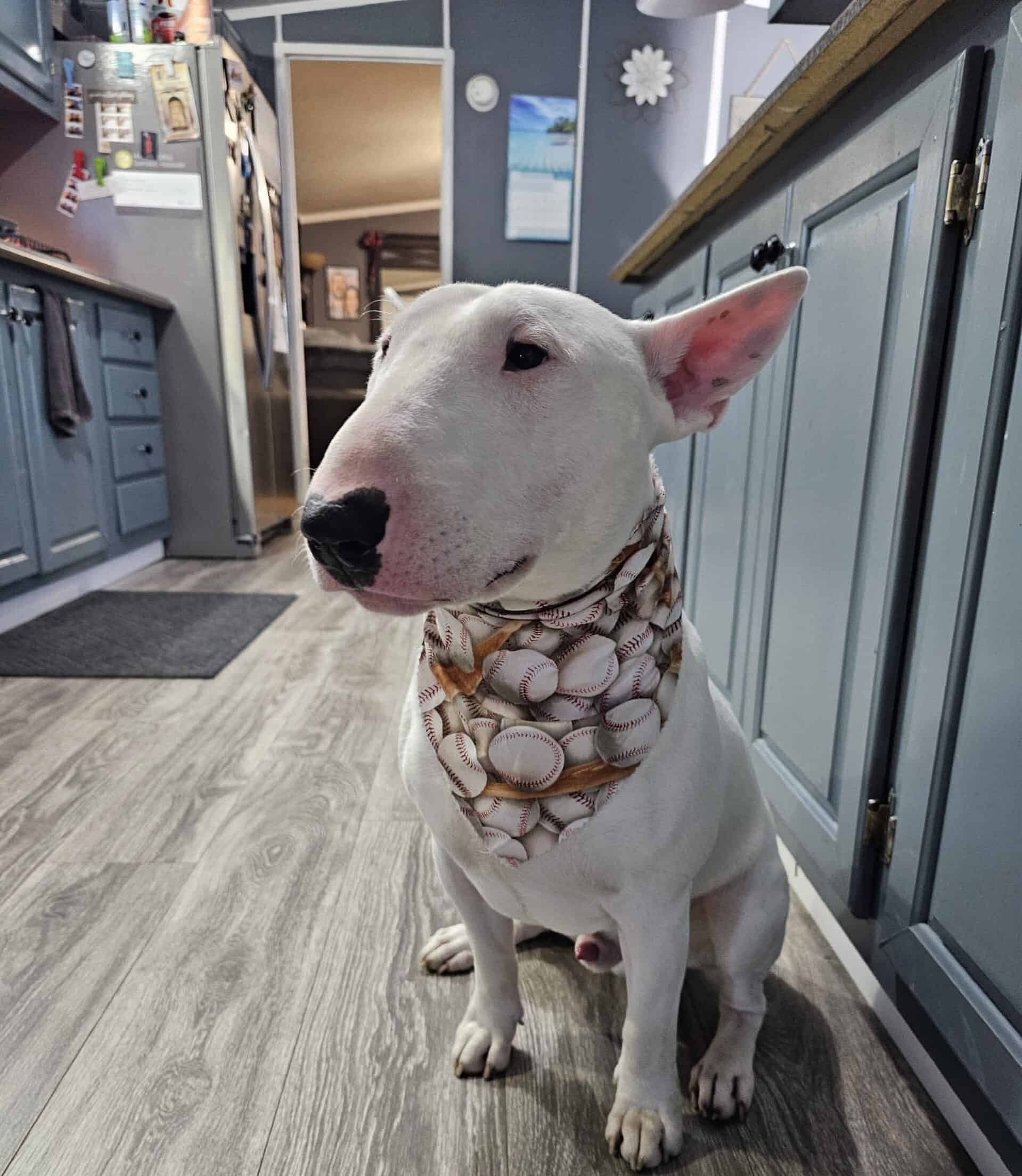Great Pyrenees Puppies for Sale: Majestic, Snow White, and Devoted
As beautiful and majestic as she is, few people who do not own a Great Pyrenese know how formidable she can be. A large breed dog from a livestock guardian background, the Great Pyrenees is strong, loyal, affectionate, and protective of their families. A Great Pyrenes makes a good dog for families, even those with children and other dogs.
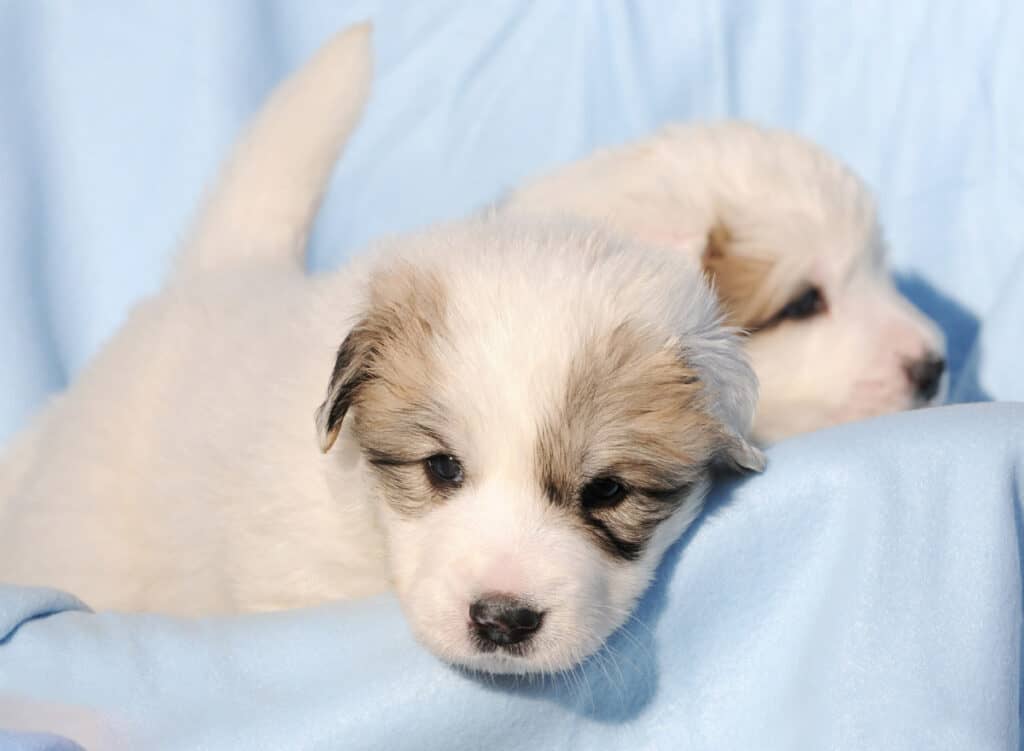
Background: Why the Pyrenees Looks and Acts the Way it Does
The Great Pyrenees originated in the mountain range of the same name between France and Spain. His forefathers may have arrived there as early as 3000 BC. Dogs had to withstand harsh conditions in their rigorous work on the hillsides. Their white coats and floppy ears differentiated them from wolves. The ancient breed’s purpose was to serve as a livestock guardian for sheep. Livestock guardians guarded their charges against hungry predators like wolves as well as potential human thieves. General Lafayette brought the first Great Pyrenees dogs to America in 1824, gifting a pair to L. Skinner. The AKC recognized the large dogs in 1933.
Physical Appearance
The Great Pyrenees is a large and imposing dog.
Great Pyrenees Size
Males are 100 pounds and up while females are closer to 85 pounds. Height ranges from 25 to 32 inches at the shoulder. Females usually top up at a maximum of 29 inches.
Physical Features
Dogs must be predominantly white but can have markings of badger, tan, reddish-brown, or gray. Even in Great Pyrenees puppies for sale, you will notice a round head and the striking contrast of their dark eyes. Adults are not as massive as they look but, instead, have medium substance. The head is wedge-shaped set on a strong neck and has medium-sized, triangular, folded ears. Slightly longer than tall, the Great Pyrenees for sale has a frame like many other working dogs. The Great Pyrenees has strong shoulders and hindquarters, a powerful level back, and a deep broad chest. You will see a low-set tail with full plumage and a slight curl. Dogs at rest carry their tails low. During excitement or work, dogs usually carry their tails in a full wheel-like curl over the back.
Coat
Great Pyrenees dogs have luxurious fur coats. Their dual coat is composed of a soft downy underlayer resistant to cold and moisture and long guard hairs. A Great Pyrenees’ outer coat is resistant to the cold and ultraviolet rays and is, surprisingly, resistant to tangling and dirt. You should never shave a Great Pyrenese as the double coat offers them moderate protection from the heat if the two layers can interact to move air currents.
Great Pyrenees Temperament
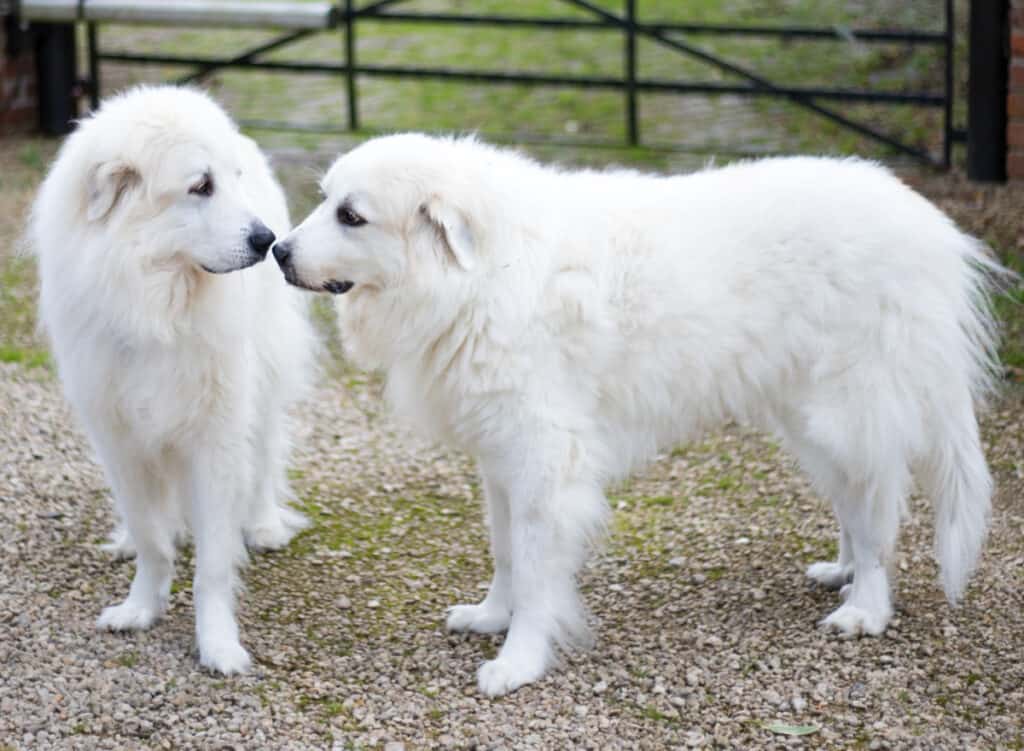
As large as the breed is, it is intelligent and gentle. The Great Pyrenees is calm and even-tempered. Dedication to training and socialization creates a dog that is polite and trustworthy. While these dogs are loyal and loving, they have a strong independent streak. Great Pyrenees are reserved with strangers. Some warm to people over time while others remain somewhat aloof. A well-socialized dog tolerates petting by guests and acquaintances outside of the family circle if their owners are present. The Great Pyrenees makes an excellent watchdog. A threatening person will likely provoke an attack, but these dogs do not have a primary use guarding property. They can become efficient guard dogs with formal training as the instincts are already present.
Children
The Great Pyrenees is a good breed to have around children. He tends to be gentle and patient with very young kids and can make a sturdy playmate for older youths. You should exercise caution around strange children. Never leave such a large and powerful dog, no matter how gentle, around toddlers or small kids.
Other Pets
These white gentle giants tend to get along with other pets, including cats and small dogs. Great Pyrenees should never be unsupervised around little dogs. Keep larger dogs separate from smaller ones when the latter exhibits Napoleon syndrome aggressive tendencies. The Great Pyrenees can display aggression towards others of the same breed and sex. Neutering and spaying your pets may decrease or eliminate this type of hostility.
Training and Intelligence
If you look at the formal intelligence ranking of dogs, you will find the Great Pyrenees somewhere in the mid-60s in working intelligence. This designation as a dog with “average intelligence” is not unusual for a dog that was bred to work independently. Therefore, your dog will probably come across as stubborn and not particularly responsive. However, make no mistake that your Great Pyrenees is a smart dog. Her mind is always working. If you cannot make your training sessions fun and stimulating, your pet can easily get bored. At the same time, you must exercise patience, persistence, and frequent repetitions. The combination of cleverness and the need for consistency makes training the Great Pyrenees a challenge.
Health
With a lifespan of 10 to 12 years, the Great Pyrenees is no more prone to genetic health issues than other large-breed dogs.
When you find “Great Pyrenees puppies for sale near me,” take advantage of the proximity and visit. The AKC recommends eye, hip, shoulder, and elbow evaluations of breeding dogs.
Care Requirements
Your Great Pyrenees for sale will have moderate care needs. This is not a high-maintenance breed.
Feeding
A Great Pyrenees should eat high-quality proteins and fats with or without carbohydrates. Premium commercial diets may include ancient grains such as barley or sweet potatoes, carrots, or blueberries. Adults eat 1800 to 2200 calories per day which is about four to seven cups of kibble. Your pet can obtain excellent nutrition from commercial dry or canned dog food, or a raw or homemade diet. If you make your dog’s food, check with your veterinarian to ensure proper nutrient balance. Great Pyrenees puppies for sale that are eight to twelve weeks will need three to four meals a day. Puppies between three and six months old may require twice or three times the calories of an adult per weight. Consult with your veterinarian about an appropriate diet for a fast-growing large-breed puppy as some bone growing problems have been linked to overnutrition. Feed adults at least two meals a day to avoid gastric torsion (GDV).
Exercise
A Great Pyrenees is a large working breed dog that does not require much exercise. You can usually satisfy your dog with 20 to 30 minutes of exercise a day with a portion dedicated to more strenuous activities. Since your dog’s coat is very heavy and not nearly as efficient at cooling as a German Shepherd’s, limit activities in temperatures above 75 degrees Fahrenheit. Other events you should incorporate into your daily exercise routine are training and socialization.
Grooming
You do not have to worry about your dog being a grooming headache. The Great Pyrenees has a dense but low-maintenance coat. The outer fur is straight or minimally wavy and thus, does not tend to mat. Brush twice weekly to keep sheen in the coat and remove any soiling that does appear. You can bathe your dog every four to twelve weeks. The coat will require substantial effort to get it completely dry. Many owners enlist the help of a professional groomer to bathe their dogs to take advantage of high-power hair driers. Check your pet’s ears every other day for signs of infection such as redness, a foul odor, abnormal discharge, or itchiness. Clip your dog’s nails every four to eight weeks. Great Pyrenees can have double rear dewclaws, so regular trimming is especially important.


